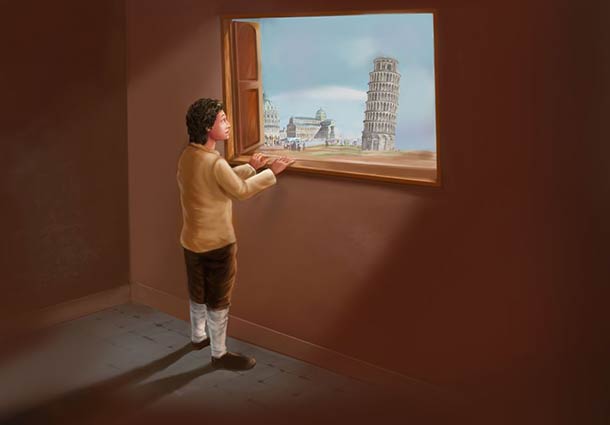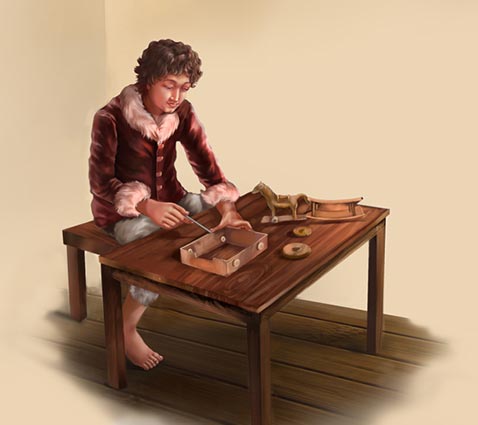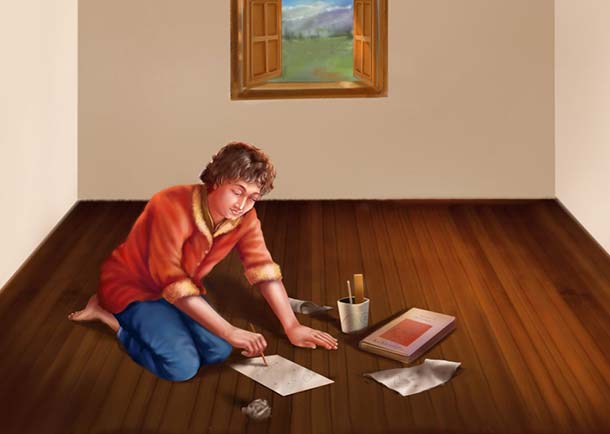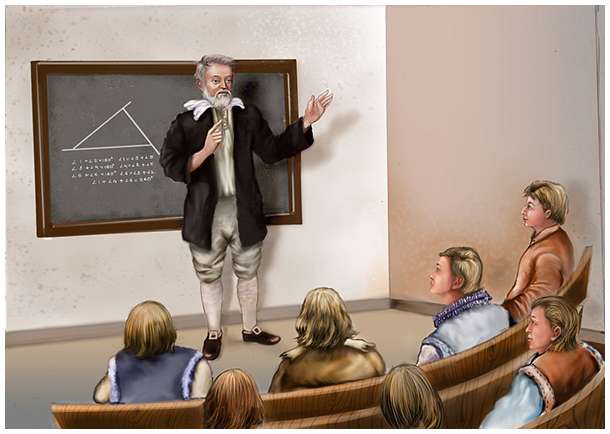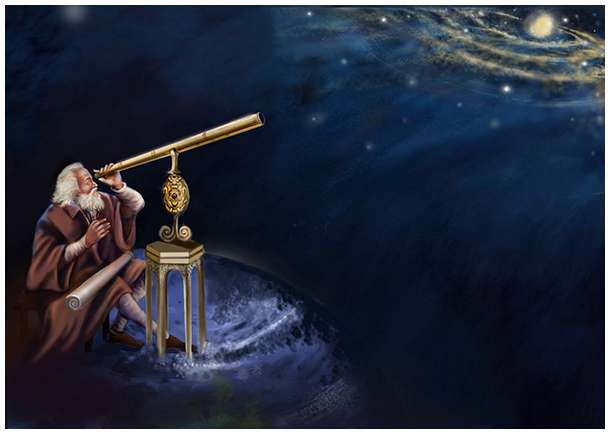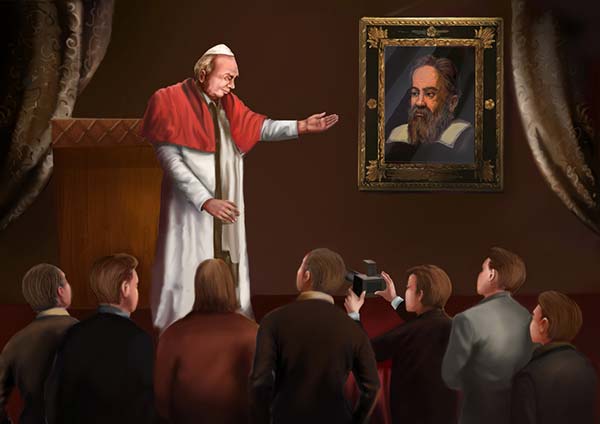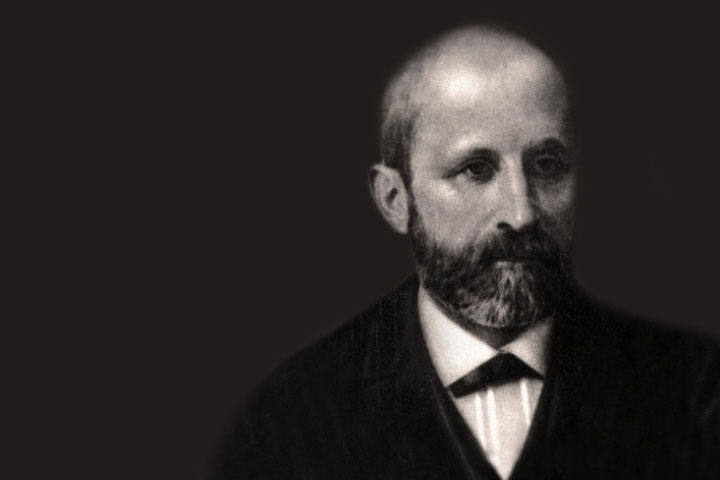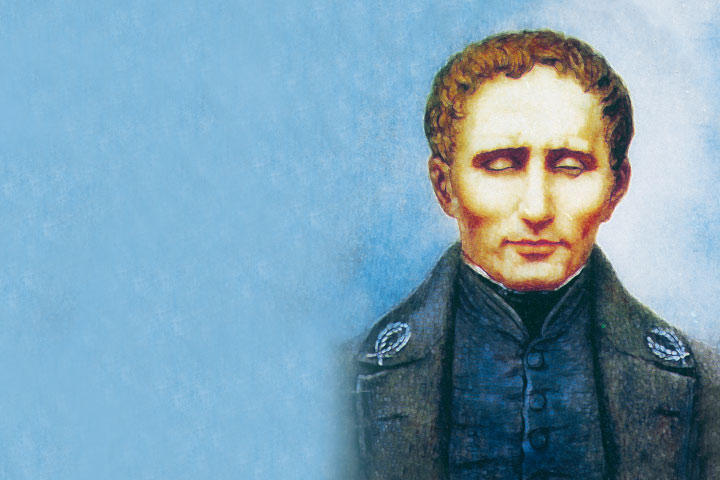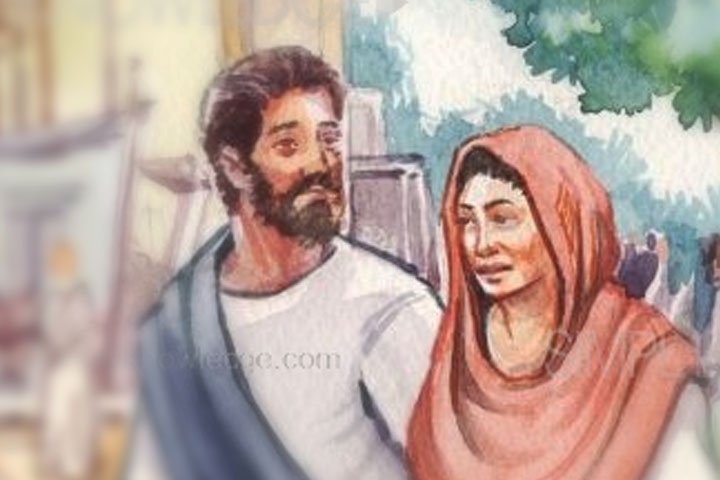
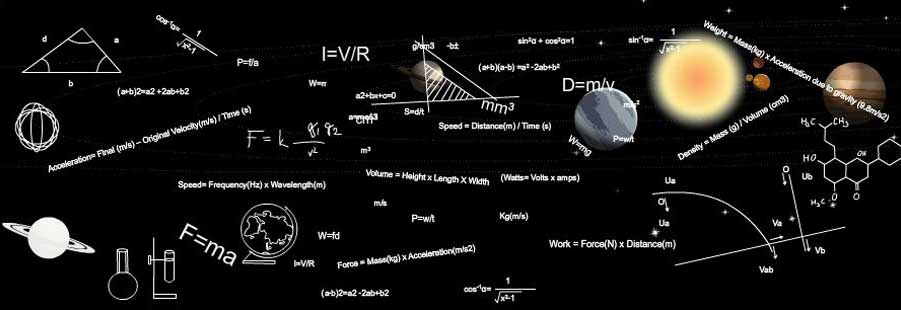
Introduction

Up above the world so high, like a diamond in the sky.”
Up above the world so high, still so close to my eye.”
Don’t you want to know who this person was and why I re-constructed the poem? He was Galileo Galilei, the man who invented the telescope. Scientists have been studying the sky at night since the beginning of time. They built huge structures and monuments that would line up with the stars at certain times of the year. These were their calendars and they followed the stars and the moon like clockwork.
It was Galileo Galilei who first peered at the stars through his tiny home-produced telescope. Since the invention of this amazing instrument scientists have built bigger and better telescopes. The bigger a telescope, the more specifications it discloses in distant objects. In due course, telescopes were launched into space that allowed even more detailed looks at objects in the galaxy,like the Hubble Space Telescope, a 2.4-meter (7.9 ft) aperture telescope that was carried into orbit by a Space Shuttle in 1990.
Galileo has always been referred to as the founder of modern mechanics and experimental physics. He was an Italian mathematician, astronomer and physicist, who made several significant contributions to the modern scientific notion. Through his extensive study he gave evidence which proved that the Earth revolves around the sun and is not the center of the universe.
Here we will speak of his life’s struggle to prove the exactness of his observation of the universe and his invention of the telescope, which became the pioneer of how the world would interpret the sky. Galileo is an icon to every human being who believes in facts and not theories.

Born with an Identity
On February 15, 1564, near modern day street Via Santa Maria in the city of Pisa, Italy, a child was born to Giulia Ammannati and Vincenzo Galilei. The child was brought up like any other child in a family. He was named Galileo, an ordinary child with an extraordinary future.
His father Galilei, a musician and music theorist originally hailed from Florence and worked in Pisa. He also performed experiments on Harmony, which means “in sync”, a term associated with creating music. The family was quite powerful and reputed and lived in an extravagant and lavish manner. However, due to reasons unknown, they faced an abrupt financial crisis in 1570. Helpless, they were forced to return back to Florence leaving their 6 year old son with a few relatives. During those times, it was very common for a child to be left with relatives during a time of loss or financial issue. Galileo lived with his relatives for two years after which he was reunited with his parents in 1572.
When the other children were busy playing outside, Galileo, who was now 10, would spend his time looking out of his window at the leaning tower of Pisa, wondering about the concepts of the tower. He would often question himself and confront people in order to understand the physics of the structure. He lived in a time when the church would speak to people about the theory of the universe. This made little sense to Galileo and he started doubting and speculating the many theories and facts of science and the universe.
Galileo was a very creative and enthusiastic child. Whilst other children of his age bought toys for themselves, he would be busy building his own. Some would work some would not, but he would not stop experimenting and inventing.
This was just the start for great things which lay ahead for him. He was very observant and curious, especially when he did not get answers to his questions. Many a times, he would try to find the replies himself through research and study. Galileo would also sketch at times and in his drawings one could see how precisely he would place the moon or the sun.
What was it about this child? What made him so special? We will find out soon.

Time to make choices
Galilei sent his son Galileo to Camaldolese Monastery at Vallombrosa which was situated 35 kms away from Florence for his preliminary studies. Here, he could improve his reading and writing and also study other subjects like Philosophy and History. At the age of 13, Galileo was sent to a monastery run by the Benedictine religious order for his higher education. Here he would study subjects like Greek, Latin and Logic. These subjects were essential for the study of Medicine, as during those times, books were printed in these languages. Medicine was the career picked up by Galilei for his son Galileo.
At an early age, Galileo was interested in becoming a priest. After completing his early education at the age of 17, Galileo took admission in University of Pisa to study Medicine, respecting his father’s decision, but eventually left it mid way to take up Mathematics. If one’s mind and soul does not accept something, he will not be able to accomplish it. What was it that made Galileo change his field? Was it his father’s wish or something else! Indeed, it was something important. Something that made him think what his actual interests were. It was his desire and quest to find answers and solutions to science which was spoken of and observed during his times. He was keen on evaluating the facts rather than reading theories.
In 1581, while sitting in a cathedral of Pisa, Galileo saw a lamp swinging above his head. What he observed that day was something which no one had ever noticed before. He noticed, that the time taken for each swing of the lamp was exactly the same. His curiosity to find answers to his questions and observations of the lamp led him to discover the Pendulum. This was Galileo; concept of weights, objects in motion, curiosity to know the scientific facts made him further go ahead and gain knowledge in Mathematics. It was much later that Galileo realized the possibility of using the principles of a pendulum to keep time.
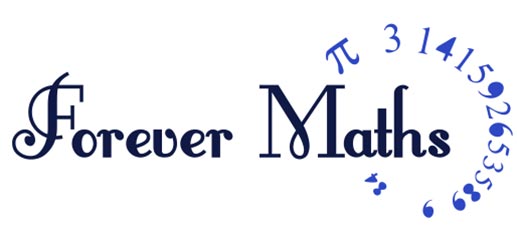
Forever Maths…
In 1583, Galileo overheard a Greek mathematician Euclid giving a lecture in Geometry. It impressed him so much that he left his medical studies and began his education in Maths. It was during this time, that he got bored of studying Medicine and his only interest remained in Mathematics. His parents were warned by the university that Galileo might flunk. Not happy with this truth, his father decided to get him trained only in Mathematics by a mathematician Ostilio Ricci of the Tuscan court to at least complete his graduation. Ostilio Ricci was once a student of Tartaglia, an Italian mathematician who taught a course on Euclid’s Elements at the University of Pisa which Galileo attended. Therefore, Galileo was able to study the works of Euclid and Archimedes from the Italian translations made by Tartaglia.
By 1585, Galileo left the university and started tutoring young students privately in Florence for Maths. In the summer of 1586 he taught at Vallombrosa, and also wrote his first scientific book The Little Balance (La Balancitta) which depicted Archimedes’ method of finding the specific gravities of substances using a balance.
From 1588-1589, Galileo worked part time as his father’s assistant who was experimenting on the working of a Harmony. Galilei had a room full of instruments for his tests; strings, diameters, weights and more. It is said, this experience gave Galileo the idea to test his thoughts through practical stration. He would experiment with balls, levers, pendulums and additional objects. He wanted to know why objects floated or swinged; he strived for knowledge of the motions of objects. He timed the motions of these objects and determined the mathematical explanations of the same.
In 1588, he decided to take a trip to Rome to apply for a teaching post in university of Bologna and visit Clavius, a professor of Mathematics at the Jesuit Collegio Romano. A topic which was very popular with the Jesuit mathematicians at this time was ‘centers of gravity’. Galileo wished to teach at the University of Bologana, and so he carried his research on the same topic to present it to Clavius. Clavius did get impressed by the research, but Galileo failed to get a job in the university as he lacked a professional degree.Galileo took part in public speeches, wrote papers on Geometry and also got involved in discussions with other mathematicians. Simultaneously, he kept in touch with Clavius. This correspondence went on for many years and the research on “centers of gravity of solids”, which he had left in Rome, was much discussed about now. As a result, Galileo started receiving lecture notes from courses at the Collegio Romano, copies of which exist even today.
One of his ideas about gravity impressed a noble man Guidobaldo Del Monte, a mathematician, who had written many books. With Monte’s help, Galileo got a job in University of Pisa in 1589, at a mere age of 25.
He did not stop inventing all this while. Whilst teaching maths he would chat with his students about weight, volume and balance. He experimented with floating objects to measure volume since it was thought that only heavy objects fell at a higher speed on Earth. He wanted facts to believe what was spoken about.
These experiments and research were an outcome of various debates he had started up on one of Aristotle’s “laws of nature” that ‘heavier objects fall faster than lighter ones.’

Defying Aristotle’s theory

Galileo, while teaching at the University of Pisa was determined to teach mathematical ideas of that time. These ideas were based on Aristotle’s teachings. He decided to try and test Aristotle’s theory. He believed, that irrespective of the weight, the objects fall at the same density in any empty space. To prove this, he rolled down numerous objects of various weights down a slightly sloped hill and noted the positions after certain intervals. He wrote a brief description about this in his book “De Motu (On Motion)”. But he needed height to prove Aristotle wrong. So, he climbed the 54 meters tall tower of Pisa, a tower he had observed since childhood, and dropped down balls of different weight and sizes from the top of the tower. Each ball fell at the same time and this surprised the onlookers. He had proved Aristotle’s theory “false”!
In 1592, he was appointed as the chair of Mathematics in Pisa after a high recommendation of Calvius and the reputation he had gained through his lectures in the University. However, owing to his arrogant nature and attitude and his criticism of Aristotle’s theory, his job contract in Pisa was not renewed after two years. Galileo was not happy with the University, as the teachers there were required to wear a toga (a distinctive garment of Ancient Rome, a cloth of perhaps 20 ft in length which was wrapped around the body and was generally worn over a tunic) which he thought was a nuisance while experimenting and refused to comply. He was frequently fined for the same. It is also said that when Galileo’s father passed away a year ago, his financial conditions were not good. Being the eldest son, he now had to bear the responsibility of his family. The income which he received from the University of Pisa was not sufficient, and there was no possibility of increment or his contract being renewed. He had made too many enemies in Pisa by proving Aristotle wrong; he had challenged Aristotle’s ideas in public. This made it difficult for the university to recognize his capabilities.
However, he did manage to get a decent job at the University of Padua, due to the strong recommendation from Guidobaldo Del Monte. University of Padua was one of the most prestigious universities at that time. The University was more than happy to recruit Galileo. Thus,he moved on to the University of Padua and on 7th December, 1592, he gave his inaugural lecture. Here he taught Geometry, Mechanics and Astronomy for the next 18 years. A period, when he made his major discoveries.
In 1593, while teaching in Padua he frequently visited a place called the Arsenal, where Venetian ships were docked and loaded. Galileo was naturally interested in mechanical techniques and during his visits to the Arsenal he became captivated by nautical technologies, such as the sector of shipbuilding. This is when he was approached to solve the issue of placements of oars in galleys by the authorities in Venice. To solve this issue, he treated the oar as a lever and technically made water the hinge. A year later, in continuation to his experiments solving the oar issue, he developed a model for a pump. This pump was a device that raised water by using only one horse.
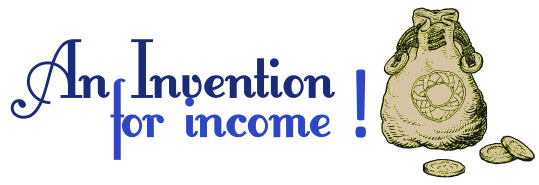
An Invention for income
But why did he invent the rudimentary thermometer? After his father’s death in 1591, Galileo was left with the responsibility of his entire family, including dowry for one of his sisters. He invented the thermometer which not only gained him profit but also took care of his basic needs. With this invention, for the first time the temperatures of different variations could be measured. He did benefit to some extent, but he hit a small jack pot in 1596 when he invented the military compass that was used to accurately aim the cannonballs. A modified version of the compass meant for the common man was out in the market in 1597. It could be used for land surveying. Galileo ended up earning a fair amount of money, and his instruments were sold for three times the cost of manufacture. In the mean time, for additional income, he started giving lectures on how to use the instrument.
The invention of the geometrical compass and thermometer made Galileo famous. He continued giving lectures in Padua, where he had numerous followers. He was being recognized for his skills and experiments. That same year, Galileo practiced and improvised his theories on motion and falling objects, and developed the universal law of acceleration. His misery and the need of money made him invent, and his childhood skills and inertest in experimenting was an added advantage. He outfitted and sold mathematical instruments.

Family Time
In course of time,Galileo’s personal life took a turn for good and around 1599 he met a lady named Marina Gamba in a trip to Venice. It was love at first sight for both. Galileo lived in a house on Padua’s Borga dei Vignali and Marina lived in Venice. Galileo could not marry Marina Gamba as she was much younger than him and was of a lower social standing. A relationship would have not been accepted by the society during those days. When Marina was pregnant with Galileo’s first child he moved her to a house which was five minutes away from his own. Thus he kept her as a mistress and fathered three children. He had two daughters, Virginia born in 1600 and Livia born in 1601, and a son named Vincenzio, born in 1606. Since his daughters were born out of wedlock, Galileo would have to raise massive dowries to get them married in a decent family and at that time Galileo’s income was inadequate for this. So, he decided to send both of his daughters to the Convent of San Matteo in Arcetri, a few miles away from Florence. It was said that parents of respected and reputed families sent their children to Convent until they found a suitable husband for them.

Turning a Spyglass into a Telescope

Since childhood, Galileo was interested and surrounded by the questions and theories that the sun is the center of the universe, the moon revolves round the Earth and so on. All of this was the theory and presumption of Nicolas Copernicus (a German mathematician and astronomer), who never actually got to invent or experiment. Galileo did not want to guess, he wanted facts and answers to his questions. The day came, when in 1609 he heard of the invention of the spyglass built by Dutch eyeglass makers.A device, which could enable a person to see far away objects closely.
Galileo began to openly express his support for the Copernican theory: that the Earth and planets revolved around the sun. While doing so he challenged the theories of Aristotle and the established theory set by the Catholic Church. Thus he decided to invent his own adaptation of the spyglass to study the planets and the universe.Galileo thought that such a device would be helpful for the military commanders. And so, his first invention was the improved version of the spyglass. His spyglass was different and far superior than the old spyglasses as he used one tube that could fit into another tube so that they could be slid back and forth. This allowed a person to change the focus of the lens. Galileo also changed the size of the lens. These things allowed his spyglass to be more powerful and by November 1609 he made lenses which could magnify objects by three times its actual size. After some more modification he made a “10 power” spyglass and named it “Telescope”. This telescope was then produced to a highly powerful senate in Venice, which not only brought Galileo fame, but also a high increment in his salary. Galileo was also honored with many public statements because of this invention.
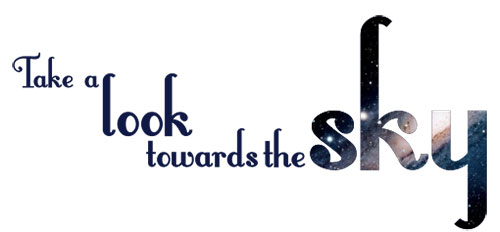
Take a look towards the sky

In August 1609, he demonstrated the telescope to some Venetian merchants, who saw its value for spotting ships and gave Galileo money to manufacture several of them.He did not halt here as he further wanted to utilize his new invention. His telescope could see further than one had expected, and one evening in December 1609, he decided to turn his telescope up towards the sky to see something one had only guessed about. It had rough surface mountains and cavities, unlike the theory stating that it was clean and smooth and beautiful. It was the discovery of the texture of the Moon. He spent the entire month making sketches of the moon as visible through his telescope.
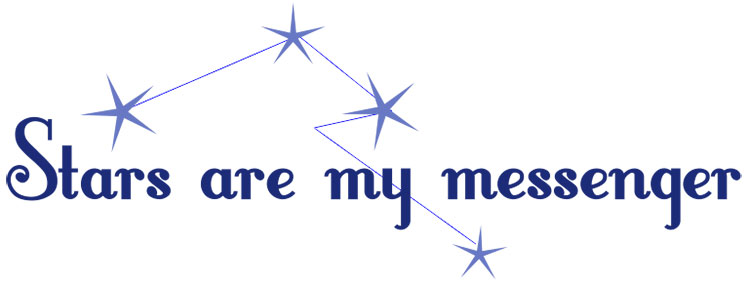
Stars are my messenger
During this time there was this notion that there were two kinds of stars: ones which were stable in a place, and the other, the wandering ones which are also called as planets- Mercury, Venus, Mars, Earth, Pluto, Jupiter and Saturn. The wandering stars were striking and caught Galileo’s attention. He spent his entire winter exploring the wandering stars and made a major discovery in January 1610. He discovered that four moons revolved around Jupiter. They were soon named after him – the Galilean moons.
Galileo published his findings as a small book titled “The Starry Messenger”. 550 copies were published in March of 1610 and he got remarkable public approval and excitement. He dedicated this book to one of his former student Cosimo de’Medici from University of Pisa, who in 1609 had become Cosimo II Grand Duke of Tuscany after his father’s death. Galileo named the planets ‘Medicean Stars’. He also sent a telescope and a copy of his book to Cosimo. As a result, in late spring of 1610, Galileo was appointed the Chief Mathematician and Philosopher at the University of Pisa. It was 18 years since he had visited Pisa, and after this position allotted to him, he decided to return to Florence.

Sickness in winters
Galileo left for Florence in September 1610, to join his job.It is here that he set up his telescopes for further studies. During the winters in Florence he started keeping unwell. This illness was associated to an incident which had occurred in Padua. It so happened that once Galileo and his friends, while staying near Padua, took a nap late afternoon in an underground room to get away from the heat. This room was cooled with air which came through a tunnel from a cave nearby. No one knows what happened, but at the end of their nap all three of them fell ill, and this illness killed one of his friend immediately, and the other died two weeks later. Galileo was the only one who survived, but now, consequently it had started showing its effect. Galileo continued with his studying and findings. He also made a number of telescopes to be sold in Europe to astronomers who were questioning Galileo’s discovery. These telescopes helped them understand Galileo’s theory more accurately and practically.
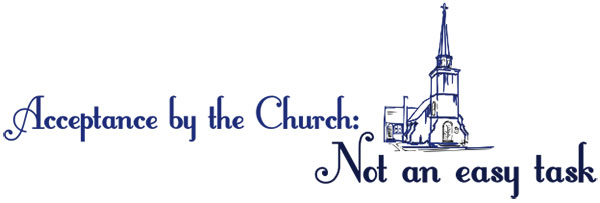
Acceptance by the Church : Not an easy task
While he was being recognized for his book and his proven facts about the solar system, there were few for whom this was an offense.Galileo was contradicting the teachings of the church which believed that it was not the Earth, but the sun that was the center of the solar system. The Catholic Church was a believer of Aristotle’s theory, and Galileo had proved them wrong by establishing the fact that the sun is stable and the Earth, the Moon and other planets revolve around it.
While many mathematicians of the church believed his findings were true, there were many who repudiated it. Under the order of Pope Paul V, Galileo was warned by Priest Cardinal Bellarmiine that he should not discuss or defend the Copernican theory.
Galileo was a religious man and he believed in the Bible, but he also believed that the writers of the Bible could have made an error and should not be taken too realistically. During those times, a common man was only meant to believe in the Bible and speak nothing off it. Only the Pope, who was the head of the Church, was allowed speaking of the Bible as he was considered worthy and capable to do so. Some of the Church clergy started responding, accusing Galileo of being unorthodox as any analysis which was against the Bible was taken as an offence to God.

Visit to Rome
Galileo visited Rome in 1611 to defend his theories. He traveled in Grand Duke Cosimo’s litter. He visited homes of many religious leaders including Pope V, who was so impressed by Galileo that he promised to be his friend forever. Galileo also became a member of Lyncean Academy, set up by Prince Federico Cesi, a Roman Noble, who was interested in Mathematics. This was a group of the greatest thinkers of that time, and also the one who published Galileo’s work.
Here,Galileo also met Maffeo Barberini, a cardinal and a high ranking priest, whom he later met again in the autumn of 1612, when Maffeo was invited as a guest by Grand Duke Cosimo and Galileo was present for a debate over floating objects. Maffeo was very much impressed by Galileo and his debate.
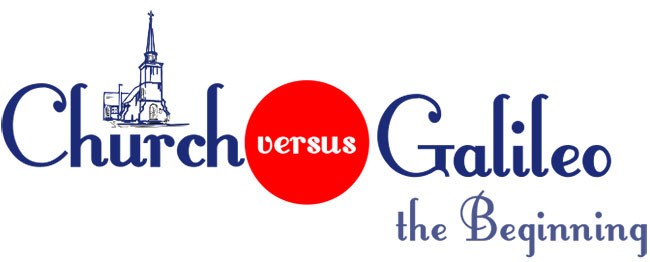
Church versus Galileo…the Beginning
Almost twelve years back, a Dominican friar named Giordano Bruno was burnt to death in Rome as he had claimed that the Earth revolved around the sun. Galileo was moving towards the same danger. He believed in Nicolas Copernicus, an astronomer who in his book ‘De Revolutionbus’(published in 1543), suggested that the earth turned on its axis once a day, and traveled around the sun once a year. Galileo was aware of these facts as he had discovered the same during his experiments and findings with his telescope. He knew Copernicus was true to his findings.
Galileo knew what the Church thought but he could not deny his own scientific findings. In 1613, he published his observations of sunspots which further contradicted Aristotle’s doctrine that the sun was perfect. He wrote the same to a student, explaining how the Copernican theory did not contradict the Biblical passages, as the Bible was written from a common man’s perception of materials and whereas science provided a different and more accurate perspective. Many copies of the letter were made by people in their own understanding, and one such inaccurate letter fell into the hands of the Inquisition in Rome, sent maybe by Galileo’s enemies.
This letter was made public and the Church Inquisition Consultants pronounced ‘Copernican theory heretica’. Galileo traveled to Rome to defend himself and was found innocent of all charges, after he presented the accurate copy of the letter. He was also cautioned not to teach the Copernican system.
To further provide evidence for his statement, Galileo started collecting data and information to support the Copernican theory and contradict Aristotle’s and Church’s doctrine. In 1612, he published his book “Discourse on Bodies in Water”, disproving the Aristotelian explanation of why objects float in water, saying that it wasn’t because of their flat shape, but instead due to the weight of the object in relation to the water it displaced.
While Galileo was tied up with collecting evidence for his theory, due to his fame and name, his daughters Virginia who was now 13, and Livia 12, were accepted in the Convent of San Matteo in October 1613. His mistress and son continued living in Padua.

The First Warning
In 1616, in a letter to Castelli, the mother of his former student Cosimo de’Medici, Galileo defended himself against the influential personalities of the Church. This letter was later known as ‘Letter to the Grand Duchess Christina’. This letter stated how the passages of Bible contradicted science. Galileo wrote, “above all in astronomy, of which so little notice is taken [in the Bible] that names of none of the planets are mentioned. Surely if the intention of the [Bible was]to teach the people astronomy, [it] would not have passed over the subject so completely.”
By this time,several people had started believing in the theory of Copernicus.One among these people was Friar Foscarini, a printer, who was responsible for publishing pamphlets stating that it is possible to support Copernican ideas with passages of the Bible.
Due to the distribution of the pamphlets by Friar Foscarini, the theory of Copernicus had many believers and supporters in the university and the churches. This slowly turned into a battle as there was a difference in what was being taught by some of the Priests of the Church about the Bible and the scientific facts of the Universe.

In 1616, a council of Catholic experts issued an Edict, advising the Inquisition,‘the idea of the sun being the center of the universe was heretical and anyone who supported the Copernican theory would be questioned, tortured and put to death if found guilty’.A month after this order was passed,Copernicus’s book “De Revolutionibus” was banned, and so were Friar Foscarini’s pamphlets.
Soon, Galileo was summoned to the House of Cardinal Bellarmino, an important personality in the Church. He told Galileo that he must not “hold, teach, or defend in any manner” the Copernican theory regarding the motion of the Earth. Galileo obeyed the order as he had no choice at that time, either agree or get killed.Galileo returned to Florence to attend his daughter Virginia’s ‘Final profession’ on 4th October, 1616. This was a ceremony where she took her vows as a nun and would now be called as ‘Sister Maria Celeste’.

And years passed by…
In September 1618, Galileo became ill again and stopped working for some time. From September to November three comets were seen flying over the skies of Florence. Since Galileo was bedridden and could not continue his studies, he began a written argument with a Jesuit priest and mathematician, Father Grassi, about the nature of these comets. This argument continued for many years and during this period, Galileo’s second daughter also took her vows in the church. She too was a nun now. The very next year in June 1619,Galileo’s son was declared legitimate by Grand Duke Cosimo II.
In January 1621, Pope Paul V died of a heart attack and Gregory XV was crowned as the new Pope. In February 1621, Grand Duke Cosimo II too passed away. He was succeeded by his ten year old son, Ferdinando II, who not only inherited his father’s title but also his court mathematician and philosopher, Galileo.
Galileo obeyed the Church order for seven long years but in these years he did not stop his research work.Galileo worked on his book “Assayer”- a book debating the comets. He completed the manuscript by 1622 and delivered it to Lyncean Academy in Rome for publication.But due to unexpected circumstances the printing was stopped. It was the summer of 1623, Gregory XV passed away and a new Pope was selected. This individual was none other than Cardinal Maffeo Barberini, who was now crowned Pope Urban VIII. Galileo immediately dedicated his book to the Pope Urban, in hope of winning positive discrimination for his ideas in Rome.

The idea of a Book
Pope Urban allowed the publishing of Assayer as he was still interested in Galileo’s ideas. He also allowed Galileo to pursue his work on astronomy and encouraged him to publish it; condition being that it should be objective and not supportive of the Copernican theory.In 1624, Galileo was assured by Pope Urban VIII that he could write about Copernican theory as long as he spoke of it in the mathematical pretext and suggestions.For the coming next five weeks, Urban and Galileo met almost five times, taking a walk and talking for hours. They discussed the Edict of 1616, and Urban agreed that Copernican theory can in no way harm the Catholic faith and can be a topic of discussion between Catholic scholars and Galileo,and only if the Copernican theory was considered as the absolute truth, the Church would be forced to act.
On 8th June, 1624, Galileo returned home, carrying with him the letter from Urban VIII to Grand Duke Ferdinando II. Letters which praised Galileo, as a ‘great man whose fame shines in the heavens and goes on earth far and wide’. Galileo continued his inventions and studies and wrote a book “Dialogue-Concerning the Two Chief World Systems.” He started writing about ocean tides as another interesting topic for research while over the years his telescope became better and better and so did his experiments. With his telescope he also discovered different ways of using measurement as a navigating tool,something which proved extremely beneficial to sea travelers.

No Peace of Mind
While Galileo was making new inventions and experiments, an issue which kept bothering him was the arguments about his theories and discoveries of the sun as center of the universe. But before doing anything big or controversial, he decided to test the seriousness of the Edict. He wrote a letter to the jurist Francesco Ingoli from Ravenna, Secretary of the Congregation of Propaganda Fide as an argument to an article which was published in 1616 challenging his views. In his letter he supported the Copernican view, and at the same time claimed, “I do not undertake this task with the aim of supporting as true a proposition that had already been declared suspect and repugnant”. This was the introduction of the letter. This letter reached Rome in December 1624. By the end of December nothing had been heard of in Florence about the Pope retaliating or disagreeing.
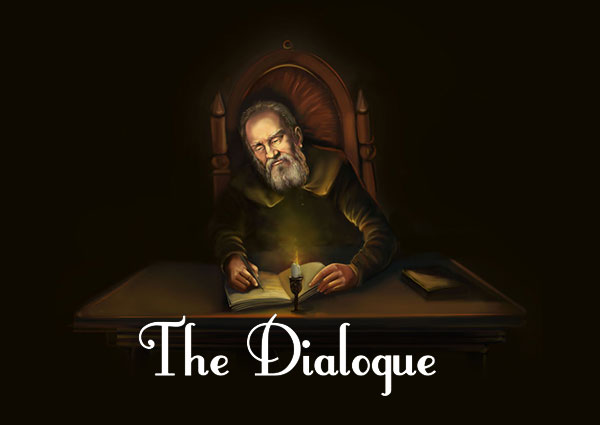
The Dialogue
Galileo was happy with this passive response and decided that he could now argue about how the Universe worked. But it finally struck him that while arguing he was wasting his precious time as a scientist. So, he decided to write a book bringing in multiple perspectives by portraying a conversation between three imaginary fictional characters. One character supported Galileo’s side of the argument and was brilliant. The second character was portrayed to be balancing and understanding either side of the argument. The third and the final character, named Simplicio, was rigid and foolish, representing all of Galileo’s enemies who ignored any evidence that Galileo was right. Soon, he wrote up a similar dialogue called “Dialogue on the Two Great Systems of the World.”
Galileo worked on this book for six long years and completed it in December 1629, at the age of 63. It was time to publish the book, but the task was not an easy one, as the book needed an approval from the church because it spoke about the Copernican system. To complete the approval process, Galileo decided to visit Rome himself with the book and applied for a license to print the “Dialogues- Concerning the Two Chief World Systems.” In the spring of 1631, he was asked to make a few changes in the book. But time was not in his favour and the same year in summer a terrible disease named Black Death raged throughout Europe. Traveling became dangerous, and so the manuscript was not approved by a single person. It was partly approved in Rome and partly in Florence with a few modifications. Finally, the book was approved and published in Florence in February 1632. It was a huge success, but had already started creating concern in Rome. Galileo, who was now 68, had become weak due to constant illness.
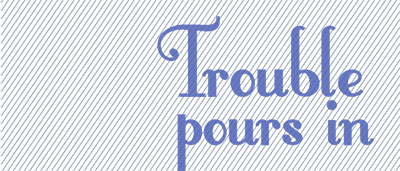
Trouble pours in
Urban as a Pope was in trouble now. He was not only a spiritualist but a political leader, who had used his political power to earn wealth. He was also accused of failing to defend the Catholic faith. No one knows if Urban ever read the ‘Dialogues’ or others read it for him. The Church’s reaction against the book was quick; they considered the book to be defensive of the Copernicus theory, which meant going against the Edict of 1616.
Galileo was called to Rome in January 1633 to face the investigation again. He stayed at the Tuscan Embassy for two months.It was only in April that he started defending himself. Galileo stood in a Holy office of the Inquisition in Rome on Tuesday, April 1633. He claimed that the “Dialogues” was unbiased.Galileo was to be judged by a panel of ten cardinals, among them one was Cardinal Francesco Barberini. There were two officials and a secretary whose job was to question Galileo pre-framed questions and report his answers to the Inquisition judges.

The Trial begins…
The investigation procedures lasted from September 1632 to July 1633. During this period of questioning, Galileo was treated with respect and was never imprisoned. During the initial stage of the trial, Galileo did not confess that he agreed to Copernicus’s ideas being true. The cardinals were not sure what to do now, after all, the Church had approved the Dialogue to be published. Hence, they decided to deal with this case without any formal trial and the Pope also agreed to the same.Galileo appeared again before the Inquisition on 10th May. However, this time he was threatened with torture to break him and make him confess that his book supported the Copernican theory. Galileo finally gave up on the torture and admitted the same, but in confidence he held that his statements were correct.
On 22nd June, 1633, Galileo was found guilty of his “Dialogue”, and was sent to a cell in the Inquisition’s dungeons. But very soon his sentenced was revised in 3 parts:
1) Serve five months in the home of Archbishop of Siena.
2) He would forever be a prisoner of the Inquisition and would later be under house arrest till death.
3 ) The Dialogue was to be banned and he will not be allowed to publish any more books supporting the Copernican theory.

This was made possible due to the request of Cardinal Francesco Barberini, who persuaded his uncle Ambassador Niccolini to fight for Galileo. Archbishop was a mathematician and got along well with Galileo who was now fragile and weak.
It was here in Siena that Galileo started writing his last book “Two New Sciences”. In this book, he put in his experiences in science of mechanics and motion. Here, the discussion was among the same three characters which were first introduced in the “Dialogue”. He started with mentioning about a discussion which takes place in the Venetian Arsenale, over a four day debate, while examining the behaviour of the moving objects.

Till Death do us Apart
By this time, Galileo’s supporters had stated a campaign to send him back home. Thus, in December 1633,Galileo was sent back home in Arcetri, near Florence under house arrest for life. He was not allowed any visitors and was also forbidden to teach. Galileo was isolated.With not much to do, Galileo continued working on his book “Two New sciences”. Once complete, he found it difficult to find a publisher, as it meant going against the Church. And so, the book was smuggled over the Alps to Netherlands, a protestant country, where the Catholic Church had no influence. The book was published in June 1638.
In 1638, Galileo was allowed to move to his home in Florence due to his old age and deteriorating health, and also,so that he could be closer to his doctors. Galileo could not read his own books as he had become nearly blind after peering into the telescope for years. But he still carried on his investigations. In 1641, a young gifted mathematician named Vincenzio Viviani,was sent by the Grand Duke Ferdinando to give Galileo some company. The same year,Galileo fulfilled his childhood dream of designing a pendulum that could keep time.
By November, Galileo was bedridden with fever which he suffered during the winters. This time it was much more serious. At the age of 77, just before his 78th birthday, on January 8, 1642, Galileo breathed his last in his house. He was still under house arrest.
As time passed, the church was no longer able to deny the scientific facts about the Earth and the sun, and in the year 1758, it lifted its ban on a large amount of the works supporting the Copernican theory. By 1822, it became clear that the Earth was not the center of the universe and the Church completely supported it by 1835. Much later, there were statements by the Vatican Council in the early 1960′s and in 1979 which implied that Galileo and his inventions had suffered at the hands of the Church, mistreated and misunderstood for rivalry, instead of scientific facts.Galileo’s work was acknowledged by several popes in the 20th century and in 1992, almost 350 years later, Pope John Paul II expressed regret about how the Galileo issue was handled.
Galileo’s contribution to our understanding of the universe was noteworthy not only in his discoveries, but also in the methods and inventions he developed and the use of Mathematics to prove them. He played a major role in the scientific revolution.He was a mathematician, a scientist and a physicist and aptly deserved the name of “The Father of Modern Science.”
Finally, in 1992, three years after ‘Galileo namesake’ spacecraft had been launched on its way to Jupiter, the Vatican Council formally and publicly cleared Galileo’s name of any wrong doing and Pope John Paul II published a document that said,“the Church made a mistake by accusing Galileo.”
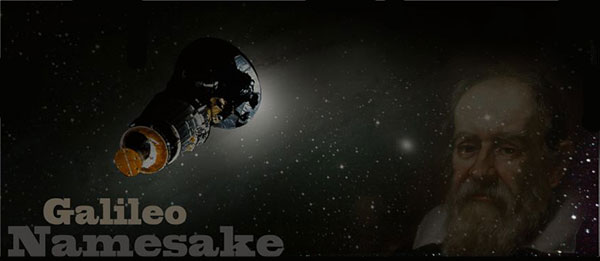
Inventors learnt an important lesson from Galileo which was: to be inquisitive and observant;to ask questions and look for deeper meanings;stand by the deeper conviction, irrespective of how the world reacts to pre-natal knowledge. It is important to hold multiple perspectives with respect such that, other’s opinion and beliefs are not fought against, but your perception is also brought forward as another important view point.
I did not know so much about Galileo till I wrote this article, although I look at the sky and think of the planets every day. Having a small telescope as a toy to watch the sky, I take temperatures with a thermometer to cook, watch the weather report to decide a holiday, but it never struck me as to who actually invented them and why, how and what was the motive behind it.
Life moves on inventions being used but inventors being forgotten.

Next Biography





